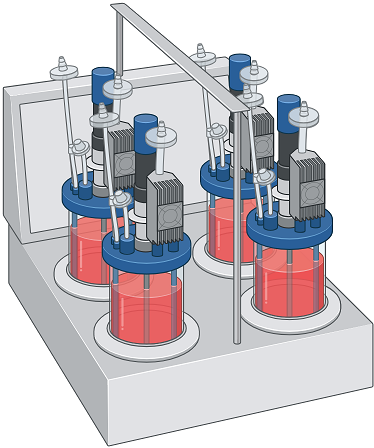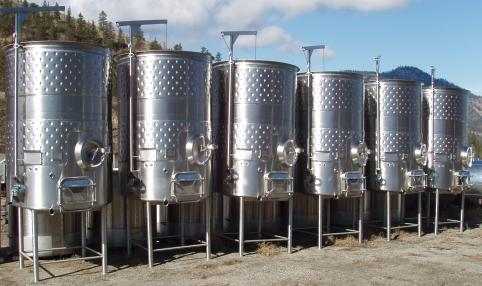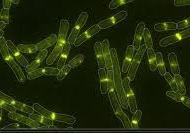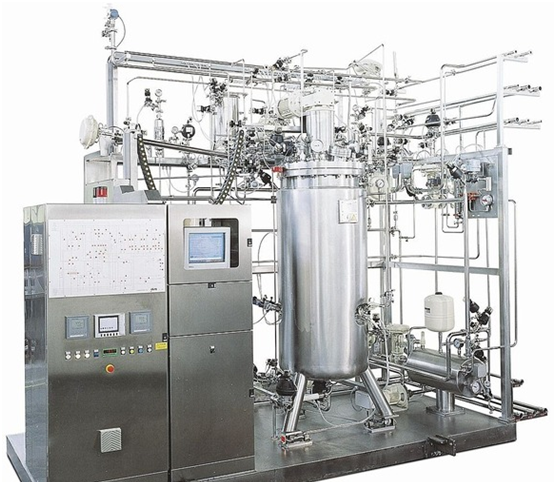Introduction
Inoculum preparation is a foundational step in the fermentation process and plays a pivotal role in determining the efficiency, reliability, and productivity of microbial-based industrial production. Microorganisms used in fermentation are either isolated from natural environments such as soil, water, or decaying organic matter, or obtained in pure form from established microbial culture collections such as the American Type Culture Collection (ATCC). Regardless of their origin, these microbial strains must be carefully prepared to achieve optimal activity, viability, and metabolic output before they are introduced into a fermentation system. The process by which microbial strains are activated, scaled, and conditioned for use in fermentation is known as inoculum preparation.
This stage of the fermentation process is not merely preparatory; it is critical to the overall success of the production cycle. A poorly prepared inoculum can lead to suboptimal growth, reduced yields, contamination, or even complete fermentation failure. Conversely, a well-prepared inoculum ensures that the microbial culture enters the fermenter in an active, healthy, and productive state, thereby maximizing output and reducing time and cost.
The ultimate goal of inoculum preparation is to develop and transfer an active culture into the production vessel under aseptic conditions, ensuring it is in the exponential phase of growth for optimal performance. This requires a carefully designed multistage process involving a sequence of culture transfers and scale-up operations to gradually increase the biomass and adapt the microorganism to the production environment. In this document, we explore the various stages of inoculum preparation, the rationale behind each step, and the essential factors to consider for effective inoculum development in both small-scale and large-scale fermentation systems.
Importance of Inoculum in Fermentation
In fermentation technology, the quality of the inoculum is fundamentally linked to the success of the entire production process. The inoculum serves as the starting biological material for fermentation and sets the stage for how efficiently the target product—whether it be an enzyme, antibiotic, organic acid, or biofuel—is synthesized. Industrial microorganisms are carefully selected for key traits such as high productivity, rapid growth rate, genetic and phenotypic stability, and resistance to contamination or environmental stressors. During inoculum preparation, these traits must not only be preserved but also promoted to ensure that the culture remains robust, active, and viable throughout the fermentation cycle.
One of the principal objectives in inoculum development is to ensure that the productive strains dominate the culture. This involves suppressing the proliferation of non-productive variants or mutants that may arise spontaneously or due to environmental pressures. If these less productive or genetically unstable cells are allowed to multiply, they can compromise the yield and quality of the final product, ultimately affecting the economic viability of the process.
In the industrial context, economics and efficiency go hand in hand. The dual goals of minimizing production costs and maximizing yield require a high level of consistency and control over the microbial culture. A well-prepared inoculum facilitates reproducible fermentation outcomes across multiple batches and reduces the likelihood of unpredictable variations in product concentration, purity, or fermentation time. Moreover, it enhances control over fermentation kinetics by shortening the lag phase and accelerating the onset of exponential growth, which leads to faster process turnaround.
Beyond productivity, inoculum quality also plays a critical role in risk management. A poor-quality or contaminated inoculum can result in fermentation failure, leading to significant time and resource losses. As such, inoculum preparation is not a mere preliminary step—it is a strategic and technical operation that underpins the entire fermentation process. When performed with precision, it increases reliability, improves efficiency, and contributes directly to the profitability and sustainability of microbial-based industrial production.
Sources of Industrial Microorganisms
Microbial strains used in industrial fermentation originate primarily from two main sources: natural isolates and culture collections. Each source has its own advantages and considerations, depending on the nature of the desired fermentation product and the specific requirements of the production process.
- Natural Isolates: These are microorganisms sourced directly from the environment, including habitats such as soil, compost, decomposing organic matter, wastewater, plant surfaces, and extreme environments like hot springs or saline lakes. Natural isolates are valuable because they may possess unique metabolic capabilities or novel biosynthetic pathways not found in standard laboratory strains. However, they often require extensive isolation, purification, and screening to identify strains that exhibit desirable industrial traits—such as rapid growth, high yield, stress resistance, or specific enzymatic activities. Furthermore, environmental isolates must be thoroughly characterized and stabilized to ensure reproducibility and safety in industrial processes.
- Culture Collections: These are professionally maintained repositories of microbial strains, such as the American Type Culture Collection (ATCC), the Deutsche Sammlung von Mikroorganismen und Zellkulturen (DSMZ), and the National Collection of Industrial Microorganisms (NCIM). Strains obtained from these institutions are typically well-documented and standardized, with known morphological, physiological, and genetic profiles. Culture collections provide high-performing, genetically stable, and often patent-protected strains specifically selected or engineered for industrial applications. Their consistent quality and traceability make them a preferred source for many commercial fermentation processes.
In both cases—whether derived from natural environments or formal culture banks—strains must be preserved to maintain viability and integrity over time. Common preservation methods include lyophilization (freeze-drying), cryopreservation in liquid nitrogen, or storage on agar slants at low temperatures. These preserved cultures serve as the foundational stocks from which the inoculum development process begins.
Before a microbial strain is used in fermentation, it must be reactivated and gradually scaled up through successive culture stages. This ensures the cells regain metabolic activity, reach optimal growth conditions, and adapt to the fermentation medium—setting the stage for successful and efficient production.
Objectives of Inoculum Preparation
The preparation of an inoculum is guided by several interrelated objectives that are essential for ensuring the success, consistency, and efficiency of the fermentation process. Each objective contributes to establishing a healthy, productive microbial culture that can perform optimally under industrial fermentation conditions.
- Activation of Metabolism: The first and foremost goal is to bring dormant cells, usually preserved in a stable state (e.g., freeze-dried, refrigerated on slants, or cryopreserved), back to life. These cells must resume their metabolic and reproductive functions to become physiologically active. Activation ensures the microorganism can transition from a resting state to one where it can grow, divide, and express the desired metabolic pathways needed for production.
- Adaptation to Culture Conditions: Microorganisms often require time to adjust to the specific composition of the fermentation medium and the physical parameters (such as pH, temperature, oxygen levels, and osmolarity) of the production environment. Gradual acclimatization through a stepwise inoculum development process helps the culture to become physiologically compatible with the conditions it will encounter in the production fermenter. This reduces lag phases and enhances performance.
- Maximization of Viable Biomass: A high-density inoculum composed of actively dividing and metabolically robust cells is essential to ensure a quick start to fermentation. The aim is to produce a biomass that contains the maximum possible number of viable and productive cells, as these will drive the synthesis of the target product once transferred to the production fermenter.
- Genetic and Phenotypic Stability: Throughout the inoculum development process, it is critical to minimize the emergence of non-productive variants or mutants that may outcompete the desired strain. Maintaining genetic and phenotypic stability ensures that the performance characteristics of the culture, including productivity, yield, and growth kinetics, remain consistent across batches.
- Minimization of Contamination Risk: Every stage of inoculum preparation must be conducted under aseptic conditions to prevent contamination by unwanted microorganisms. Contaminants can not only compete with the production strain for nutrients but may also spoil the product or lead to batch failure, resulting in significant economic losses.
Together, these objectives form the cornerstone of a robust and efficient inoculum preparation strategy.
Stages of Inoculum Preparation
Inoculum development typically involves a multistage process designed to incrementally increase microbial biomass and adjust the culture to the scale and environment of the production fermenter. The major stages are outlined below:
1. Preparation of First-Generation Culture from Preservation Stock
The process begins with the retrieval of a preserved microbial strain, typically stored on agar slants, in ampoules, or as frozen vials. A portion of this preserved culture is used to inoculate a fresh nutrient agar slant, which serves as the first-generation culture. This initial subculturing reactivates the dormant cells and allows them to resume normal metabolic functions under controlled conditions.
The incubated slant is allowed to grow until a visible and healthy colony develops. This culture must be visually examined for purity, and in many cases, microscopic or biochemical analyses are conducted to confirm the identity and integrity of the strain.
2. Development of Working Culture
From the first-generation culture, a portion of the microbial cells is transferred to prepare a working culture. This involves suspending the microbial biomass in sterile saline or a liquid nutrient medium. In some cases, glass beads are added to facilitate the release of cells from the agar surface. The suspension is then used to inoculate a flatbed bottle or test tube containing fresh agar medium.
The working culture is incubated under optimal conditions for growth. The incubation environment, including temperature, pH, aeration, and light (if required), is tailored to the specific microbial species. This step results in a moderately scaled-up and metabolically active culture, ready for further amplification.
In small-scale fermentation, the working culture may directly serve as the inoculum. However, for industrial-scale operations, additional scale-up steps are necessary.
3. Inoculation into Shake Flask
The next step involves transferring the working culture into a sterile shake flask containing a liquid nutrient medium. This medium typically mimics the composition of the final fermentation broth but may be slightly richer to support rapid growth. The flask is incubated on a rotary shaker, which provides both agitation and aeration, thereby promoting rapid cell growth.
The goal at this stage is to transition the culture from the lag phase to the exponential (logarithmic) phase of growth, where cellular activity and biomass increase most rapidly. The duration of incubation is carefully monitored, as inoculating the next stage during the late log phase is ideal for ensuring high viability and metabolic activity.
4. Transfer to Seed Fermenter
Once a sufficient volume of culture is obtained from the shake flask, it is used to inoculate a seed fermenter—a small-scale fermenter that mimics the conditions of the main production vessel. This step is crucial for acclimating the microorganism to the operational conditions of industrial fermentation, including parameters like aeration rate, mixing speed, pressure, pH control, and nutrient availability.
The seed fermenter provides a controlled environment where microbial biomass is amplified to a volume and density suitable for inoculating the main production fermenter. This stage may last 24 to 48 hours, depending on the microbial species and target biomass level. The seed culture is regularly sampled and analyzed for cell concentration, viability, contamination, and other key metrics.
5. Final Transfer to Production Fermenter
The final stage of inoculum preparation involves transferring the seed culture into the main fermentation vessel under sterile conditions. The production fermenter contains the actual fermentation medium, optimized for metabolite production rather than biomass growth. The inoculum must be added in such a way that the microbial culture remains viable and starts adapting quickly to the new environment.
Key conditions such as temperature, agitation, aeration, pH, and nutrient concentrations are adjusted to encourage optimal fermentation activity. At this point, the inoculum has passed through several stages of preparation and is now in a highly active, uniform, and productive state, suitable for the synthesis of the desired product—be it antibiotics, enzymes, organic acids, alcohols, or other biochemicals.
Factors Affecting Inoculum Quality
The success of inoculum preparation is critically dependent on several interrelated factors. Ensuring that each of these is carefully monitored and optimized contributes to the development of a robust, viable, and productive inoculum capable of driving efficient fermentation outcomes.
- Aseptic Technique
Contamination is one of the most common and serious issues in microbial fermentation. Aseptic techniques are essential during every stage of inoculum development to prevent the introduction of unwanted microorganisms. Even low levels of contamination can outcompete the production strain, reduce yield, or lead to total process failure. Therefore, all materials (media, vessels, pipettes), equipment (fermenters, shakers), and personnel practices must strictly adhere to sterilization and cleanliness protocols. This is especially critical during manual transfers between culture vessels.
- Medium Composition
The formulation of the growth medium significantly affects the physiology of the microorganism. During inoculum development, the medium should support rapid cell growth without triggering early metabolite production, sporulation, or stress responses. Often, richer media are used in early stages to ensure a fast biomass buildup, whereas production media are more defined. Adjustments in carbon, nitrogen, trace elements, and vitamins should be made according to the specific requirements of the microorganism.
- Growth Phase Timing
The physiological state of the culture at the time of transfer plays a crucial role in fermentation performance. Ideally, transfers should be made during the late exponential (log) phase of growth, when cells are most metabolically active, genetically stable, and prepared for rapid adaptation. Transferring too early or too late can lead to extended lag phases, reduced productivity, or stress.
- Oxygen Availability
For aerobic microbes, sufficient oxygen transfer is essential at all inoculum stages. This is typically achieved through shaking in flasks or sparging in fermenters. Poor aeration can lead to oxygen-limiting conditions, causing reduced cell growth, shifts in metabolic pathways, or cell death. Optimizing agitation speed, flask volume-to-liquid ratio, and aeration rates is key.
- Inoculum Volume
The volume of inoculum used at each stage affects both the growth rate and the overall balance of the microbial population. Too little inoculum can prolong the lag phase and increase the risk of contamination. Too much inoculum may rapidly exhaust nutrients or oxygen, leading to stress and early stationary phase. A standard range (typically 5–10% v/v) is often applied, though this can vary depending on the organism and system.
- Temperature and pH Control
Each microorganism has optimal temperature and pH ranges for growth. Deviations from these conditions can affect enzyme activity, membrane stability, and overall cell metabolism. Throughout inoculum development, maintaining consistent temperature and pH ensures healthy and uniform culture growth. Automated fermenters often include built-in systems for precise control of these parameters, which becomes increasingly important as the culture volume scales up.
By carefully managing these six critical factors, the inoculum can be prepared to maximize productivity, minimize risk, and ensure a smooth transition into the production stage of fermentation.
Conclusion
Inoculum preparation is a sophisticated, multi-step process that serves as the foundation of successful industrial fermentation. Whether the end goal is to produce antibiotics, enzymes, alcohols, organic acids, or biopolymers, the role of a well-prepared inoculum cannot be overstated. It ensures that the fermentation process begins with a high-density, metabolically active, genetically stable, and contaminant-free microbial population. Through methodical scaling, environmental adaptation, and quality control, the inoculum preparation process bridges the gap between preserved cultures and full-scale production, ultimately contributing to higher yields, consistent product quality, and economic efficiency.
The key to successful fermentation lies not just in the final reactor, but in the steps that lead up to it—and inoculum preparation is perhaps the most crucial among them.
References
Bader F.G (1992). Evolution in fermentation facility design from antibiotics to recombinant proteins in Harnessing Biotechnology for the 21st century (eds. Ladisch, M.R. and Bose, A.) American Chemical Society, Washington DC. Pp. 228–231.
Nduka Okafor (2007). Modern industrial microbiology and biotechnology. First edition. Science Publishers, New Hampshire, USA.
Das H.K (2008). Textbook of Biotechnology. Third edition. Wiley-India ltd., New Delhi, India.
Latha C.D.S and Rao D.B (2007). Microbial Biotechnology. First edition. Discovery Publishing House (DPH), Darya Ganj, New Delhi, India.
Nester E.W, Anderson D.G, Roberts C.E and Nester M.T (2009). Microbiology: A Human Perspective. Sixth edition. McGraw-Hill Companies, Inc, New York, USA.
Steele D.B and Stowers M.D (1991). Techniques for the Selection of Industrially Important Microorganisms. Annual Review of Microbiology, 45:89-106.
Pelczar M.J Jr, Chan E.C.S, Krieg N.R (1993). Microbiology: Concepts and Applications. McGraw-Hill, USA.
Prescott L.M., Harley J.P and Klein D.A (2005). Microbiology. 6th ed. McGraw Hill Publishers, USA.
Steele D.B and Stowers M.D (1991). Techniques for the Selection of Industrially Important Microorganisms. Annual Review of Microbiology, 45:89-106.
Summers W.C (2000). History of microbiology. In Encyclopedia of microbiology, vol. 2, J. Lederberg, editor, 677–97. San Diego: Academic Press.
Talaro, Kathleen P (2005). Foundations in Microbiology. 5th edition. McGraw-Hill Companies Inc., New York, USA.
Thakur I.S (2010). Industrial Biotechnology: Problems and Remedies. First edition. I.K. International Pvt. Ltd. New Delhi, India.
Discover more from Microbiology Class
Subscribe to get the latest posts sent to your email.





